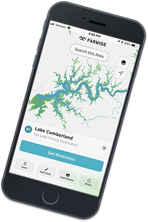Simple guidelines for duck hunting success in the US.

A large majority of waterfowl hunters are not skilled, nor do they make a living out of shooting down ducks of different species. According to the more knowledgeable duck shooters, it helps to understand the basic principles of duck hunting. Remember that there’s no quick fix to becoming a better duck hunter. Even today, ducks are thriving as they know how to avoid predators — especially sportsmen and hunters. The challenges posed by their dodging skills makes this genre of hunting very rewarding.
Given this, once you have the dos and don’ts in place, it will be more thrilling to enjoy your stints in the open marshes and watery terrains of your choice.
Here’s a quick guide on hunting ducks in the US.

How to Hunt Ducks – the Right Way
1. Recognize the species
Knowing how different species of ducks behave or look can help you add only the ones you want to your legal count or daily haul. It is beyond the scope of this article to delve into the habitats and physiology of the various kinds of ducks found in the different states of America. The wing span, size, structure, mating habits, calls and favorite hangout places of various species of ducks set them apart. For instance, in Northern US, ducks are generally categorized into four groups:
- Puddle ducks or dabbling ducks
- Whistling ducks or tree ducks
- Sea ducks
- Diving ducks
These ducks are confined to specific geographical regions. It’s important to ascertain their flying behavior to plan your shoots. Practice will make you perfect!
2. Things to carry
Given below is a small list of things that all waterfowl hunters need to carry for the hunt.
- Ammo
- Shotgun
- Blind bag
- Shotgun sling
- Duck calls comprising of
- Double reed duck call
- Mouth calls
- 6-in-1 whistle
- Electronic caller
- Short-reed goose call
- Duck call
- Dog whistle
- Decoys
- Decoy accessories
- Weights
- Bag
- Cord
- Gloves
- Anchors
- Gaff Hook
- Duck straps
- Gun Case
- Hammer
- Stakes
- Choke tubes
- Game shears
- Binoculars
3. Where to go duck hunting?
Duck species with varying requirements and different physiology choose to live in diverse kinds of habitat. For example:
- Puddle ducks, which are well-equipped for shallow-water feeding, flock to lake shorelines, marshes, swamps, temporary wetlands, river backwaters, puddles and similar regions.
- Wood ducks, and mallards (at times) feed in and can be found near small creeks, rivers, etc.
- Mallards, pintails, black ducks and different species of puddlers are specific to harvested agricultural fields.
- Mallards belonging to the Canadian prairie potholed terrains are known to fly to flooded timber or rice fields, etc.
It may feel cumbersome to find specific species of ducks as they live in various areas. However, sound observational skills and the urge to work hard to get to them enables success. Scour the Internet, talk to other duck hunters, or go through unconventional details published by professional guides and duck hunting portals to hunt in areas far removed from the crowd. In such places, you will not be confined to spotty hunting and will have a higher chance of making the kill.
4. Duck hunting Gear
There is no thumb rule to guide what you should wear before stepping out to hunt ducks. Your attire is a matter of personal preference and guided by the weather conditions on the day of your adventure. Typically, you may want to pack in the following items of clothing before leaving home.
- Camo jacket, shirts and pants
- Boots
- Beanie or camo hat
- Gloves
- Rain suit
- Earmuffs
- Overalls and insulated pants
- Face mask
- Socks
- Warm and long underwear, etc.
5. The decoy games
A successful waterfowl hunting method lies in decoying the species you’re looking for. Mainly, there are three common methods of hunting ducks – pass-shooting, jump-shooting and decoy hunting. Among these, decoys are a hot favorite for hunters.
Decoy hunting, the oldest method, combines the lure of fake ducks (or decoys) with a blind or concealed setup. Decoys are the best way of being mobile as you spend time outdoors. You can hunt in open waters perched on a boat, while wading in marshy lands or from shorelines. Just identify the areas where you are likely to find ducks in large numbers. Take stock of the direction of the wind as ducks are likely to fly that way after landing. If possible, keep your face away from the sun. Also, try to position yourself in a manner that ducks cannot spot you while flying in your direction.
6. Duck calls
Decoys entice ducks and lure them to approach. Acquire perfect air control to get into the league of great callers. It’s important to learn how to change your tempo, volume and tone to create sounds like multiple ducks. This helps in working them closer to your range without scaring them in any way. Refrain from grunting and try to maintain your airway the right way – in an open position. Keep it relaxed as far as possible to produce the appropriate duck sounds. Mimic mallards, which feature a barrel-like configuration having a mouthpiece with a couple of reeds, can become your favorite decoy tool. A simple blow would generate a funny sound. However, when you huff air deeply and from the depth of your diaphragm, you get raspier hen-like mallard sounds.
Check out this awesome duck hunting film about Dennis Loosier, an avid duck hunter who spends all year engaged and preparing for duck season in the flooded forests of Texas.
Way Forward
Ducks don’t wait forever. So, get in touch with us to understand the duck hunting regulations and laws in different US states. Know more about your duck hunting requirements, where to go, what essentials and non-essential items to pack in, and more. With years of experience and the best duck hunting skills in place, our guides can help you get the most from your next outing. At Farwide.com, the duck hunters and guides have several hunting tips and tricks to share.














5915 Comments
Leave Comment
Cancel Reply